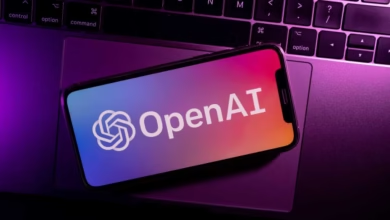The State of AI in 2024: A Leap Forward in Adoption and Value

As we delve into the latest findings from McKinsey’s annual Global Survey on AI, released in May 2024, it’s clear that we’re witnessing a pivotal moment in the artificial intelligence landscape. This comprehensive report, drawing insights from 1,363 participants across various industries and roles, paints a picture of rapid adoption and emerging value creation in the AI space.
The Great AI Surge
The most striking revelation is the dramatic surge in AI adoption. After years of hovering around 50%, AI adoption has skyrocketed to 72% in 2024. Even more remarkable is the meteoric rise of generative AI, which has nearly doubled its presence in organizations from 33% to 65% in just one year. This isn’t just about more companies using AI; it’s about deeper integration across business functions. Half of the respondents now report AI adoption in two or more areas of their business, a significant jump from less than 30% in 2023.
Generative AI: Making Its Mark
Generative AI, in particular, is making its mark across various departments. Marketing and sales lead the charge with 34% adoption, followed closely by IT at 23% and product development at 17%. Content creation for marketing strategies and personalized marketing emerge as the most common applications, highlighting the technology’s immediate impact on customer-facing operations.
The survey also sheds light on the personal experiences of professionals with generative AI. There’s a notable increase in its use both at work and in personal lives across all demographics, with C-level executives showing the most significant uptick. This trend suggests that AI is not just a tool for specialists but is becoming an integral part of daily business operations at all levels.
Investing in AI’s Potential
When it comes to investments, organizations are showing equal enthusiasm for both generative and analytical AI across industries. With 67% of respondents anticipating increased AI investments over the next three years, it’s clear that businesses are betting big on AI’s potential. And these bets seem to be paying off. Generative AI is already creating value through cost reductions, particularly in human resources, and revenue increases, notably in supply chain management. Meanwhile, analytical AI continues to deliver cost benefits in service operations and boost revenues in marketing and sales.
However, this rapid adoption isn’t without its challenges. Organizations are grappling with risks associated with generative AI, primarily inaccuracy and intellectual property infringement. Nearly half of the respondents report experiencing at least one negative consequence from gen AI use, with inaccuracy, cybersecurity issues, and lack of explainability topping the list. These concerns are driving increased efforts to mitigate risks, particularly around accuracy.
Implementation Strategies Across Industries
The implementation of generative AI varies across industries. While about half of the reported uses employ off-the-shelf models with minimal customization, industries like energy, materials, technology, and media show higher rates of model customization or proprietary development. Most organizations manage to implement gen AI capabilities within 1-4 months of project launch, though more customized solutions typically require longer timelines.
Perhaps the most intriguing insight comes from the small subset of high performers – organizations that attribute over 10% of their EBIT to generative AI use. These trailblazers are leveraging gen AI across more functions, are more likely to customize or develop proprietary models, and pay closer attention to AI-related risks. They also follow best practices in strategy, talent management, and risk mitigation. However, even these high performers face significant challenges, particularly in data governance and integration, as well as in adapting their operating models.
The AI Revolution is Here
As we look to the future, it’s clear that AI, and particularly generative AI, is no longer just a buzzword or a futuristic concept. It’s a present reality that’s reshaping business operations and strategies across industries. The companies that can effectively customize AI solutions, manage associated risks, and adapt their operating models are likely to see the greatest returns on their AI investments. The AI revolution is here, and it’s moving faster than ever before.

Key Findings
- AI adoption has jumped to 72% in 2024, up from 50% in previous years.
- Generative AI adoption has nearly doubled from 33% in 2023 to 65% in 2024.
- 50% of respondents report AI adoption in two or more business functions, up from less than 30% in 2023.
- Top functions for gen AI adoption: Marketing and sales (34%), IT (23%), and Product/service development (17%).
- Most common use cases: Content support for marketing strategy (16%) and Personalized marketing (15%).
- Significant increase in gen AI use both at work and in personal lives across all demographics.
- C-level executives show the largest jump in gen AI use.
- Organizations are investing similarly in gen AI and analytical AI across industries.
- 67% of respondents expect increased AI investments over the next three years.
- Gen AI is creating value through cost reductions (especially in HR) and revenue increases (notably in supply chain management).
- Analytical AI shows cost benefits in service operations and revenue increases in marketing and sales.
- Inaccuracy and intellectual property infringement are increasingly considered relevant risks.
- Organizations are actively working to mitigate inaccuracy risks.
- 44% of respondents report experiencing at least one negative consequence from gen AI use.
- Top consequences: Inaccuracy (23%), Cybersecurity (16%), and Explainability (12%).
- About half of gen AI uses employ off-the-shelf models with little customization.
- Energy, materials, technology, and media industries show higher rates of model customization or proprietary development.
- Most organizations implement gen AI capabilities within 1-4 months of project launch.
- Highly customized or proprietary models typically take longer to implement (5+ months).
- A small subset of organizations (46 out of 876) attribute over 10% of their EBIT to gen AI use.
- High performers use gen AI in more functions (average of 3 vs. 2 for others) and are more likely to customize or develop proprietary models.
- They also pay more attention to gen AI-related risks and follow best practices in strategy, talent management, and risk mitigation.
- High performers face challenges, particularly with data governance and integration (70%) and operating model implementation (48%).






